

NORTH CAROLINA
May 1999

1 of 1


NORTH CAROLINA
May 1999


1 of 1
My brother, Ron, and I are heading down to eastern NC in search of the red-phase Carolina Pygmy Rattlesnake
(Sistrurus m. miliarius). As we leave Durham things aen't looking too hot, literally. Temps in the lower 50s with a
windy, rainy sky. By the time we get to our destination the sun is starting to crack through and it warms up a little,
but we aren't expecting to see much.
Stop to inspect something on the road. Unfortunately, it’s a DOR Redbelly Water Snake (Nerodia erythrogaster),
but fortunately it’s fresh, so at least some things are out and about. Just then we spot a turtle coming out of a ditch
and making its way towards the road. It’s a small Snapper, looking way cute and determined. As Ron is taking its
photo, I flip some trash by the side of the road and uncover a Mud Turtle covered in, well, mud.
The centerpiece of this trash pile is a torn-up old couch. As I make my way over to check it out, I suddenly see a
black tail disappearing through the grass in the direction of the sofa, clearly a Black Racer.
I call Ron to help me so that he can turn and I can grab. I crouch down, and on the count of three, he flips the
couch. My eyes search for the Racer, then stop when I heard the buzzing of an angry bee. But it isn't a bee. There I
am, leaning over a gorgeous red Pygmy!
Well, we get excited and stare, take photos, and stare some more. Our second flip and we found our target . . .
never underestimate the power of sheer dumb luck.
We set the Rattlesnake aside and flip the couch back the other way to look for the Racer. It’s still there, and he
quickly slides back under the couch bottom, which is now on the ground. But there is also an unexpected Eumeces
inexpectatus, a male in breeding plumage with a nice orange-brown head. I grab it for photos, and at the same time
Ron picks up a Southern Toad that hops out from beneath the other end of the couch.
So now we have seen four species under this one piece of furniture. No, make that five. Well, actually, it’s six.
We once more flip the couch in the other direction to catch the Racer, who once again dodges by heading under the
back of the couch that is now flat on the ground. But then something else slithers, and instead of a snake, it’s an
Eastern Glass Lizard. And once again, as I grab a saurian, Ron grabs an anurian, but this time it’s a beautiful Green
Tree Frog!
We’re surprised to find a Hyla hunkered down beneath cover, but there it is. And there we are on a sure-to-be-
skunked day, having found nine different species (six under one piece of cover!) in our first 15 minutes. We stay a
few more moments to worship this amazing piece of furniture, which we dub the "Couch of the Covenant", and think
about taking it with us. We’re sure it possesses biblical properties, like Moses' staff, capable of transforming ordinary
inanimate objects beneath it into living, breathing herps. But it’s too heavy, and really dirty, so we leave it behind.
Oh, yeah. On the fourth back-and-forth with the couch we finally get that Racer.
After leaving the scene of our mystical experience, we cruise nearby roads on foot and by car, keeping a sharp
eye out for upholstery. The sky lightens up, but it never gets really warm. Despite our windfall at the couch, we’re
still concerned about the weather. Except for the Snapper and the Racer, everything else had been snuggling under
cover. We discuss plans for floral still lifes, maybe a picture or two of pig farms.
As it turns out, we don't have time. Half an hour after we leave the couch I pull off to the side of a dirt road.
Ron and I get out and face opposite directions. I walk back about 100 feet to rescue a Mud Turtle that was crossing
the road (we were to see about a dozen in the next two days). At the same time, Ron walks forward towards a
wooden bridge, and there is this Eastern Kingsnake disappearing into the grass! We get really psyched. We've caught
Florida kings around Miami where we grew up, but I've always been partial to chain kings, and this is our first!
Fifteen minutes farther down, just across another bridge where it turns to pavement, this friendly fella is sitting
smack in the middle of the road, just taking his time to reach the other side. As we approach he gives us a nice smile,
but with all his gaping, he never strikes. That's consistent with nearly all my Moccasin experiences. In fact, research
suggests these snakes display mostly for bluff, usually resorting to strikes only when restrained, and not deserving of
their reputation for aggressiveness.
After we leave the Moccasin we pass another Kingsnake, but unfortunately, it’s DOR from that morning. Five
minutes later a really big Racer crosses in front of us, but he’s long gone by the time we get out of the car.
By now it’s about an hour before sunset, and turning down another road we come upon a neonate Rat Snake
WOR (wounded on road). He’s still crawling, but we know he isn't going to make it. Ten minutes later we meet up
with his bigger cousin.
Rat Snakes along the coast are considered an intergrade between the Black Rat Snake (Elaphe o. obseleta) from
interior parts of the state and the Yellow Rat Snake (E. o. quadrivittata) found further south. Note some clearly visible
striping, characteristic of the Yellows, and the saddles more typical of Black Rats. The color is a drab olive green,
somewhere between yellow and black. Interestingly, on our way back to Durham we came across two Rat Snake road
kills, about 100 miles apart, and we could see how they become progressively darker as we drove further inland
towards the Black Rat range.
Next morning our car breaks down in the middle of nowhere. Some local folks passing by help us get to a
mechanic, and we manage to limp into town, literally coasting the last half block into the garage as the alternator
gives its last gasps. Can't be fixed till the next day, but the mechanic is so amused by what we’re doing that he lends
us his personal spare car so we can keep hunting. He even tells us where we can find some old collapsed cabins in
the woods down some really back roads. So off we go.
En route we spot this guy basking on a concrete pedestal from a demolished bridge that once crossed the canal.
So near, yet so deep and wet, so we pass on making any attempt to have him in hand, and just kept going.
Find a dirt road skirting a very swampy area, so we get out and walk. Come across three more Cottonmouths,
including the biggest one I've ever seen (I'm guessing close to five feet, and really fat). Unfortunately, we discover him
when he spooks, and he gets away before we can get a decent shot with the camera. No such problem with this
attractive slowpoke.
Next morning we get our car back and head towards the busted-up cabin that our new best friend (who turns
out to be a pretty good mechanic, too) told us about. Stop to flip some boards and turn up a juvenile Skink, complete
with bright, blue tail. Notice the cryptic coloration, obviously the result of selection pressures to adapt to their
natural environment of silk-screened T-shirts.
We pass a DOR Rat Snake on the way, then spot one AOB (Alive on Board), just stretched out in a patch of
sunlight among the shaded ruins of the house. Walk inside and flip a mattress (a species of couch) and a big, bright,
bronze Broadhead skink (Eumeces laticeps) darts out, but there is so much junk to hide in we never have a chance. As
Ron stands up I glance above his head, and there is yet another Rat Snake, wedged in between the rafters and the tin
roof, which is beginning to warm up.
As we walk out of the cabin I say, "There's nothing quite like that moment of discovery when you flip
something, and you slowly realize you're looking at a snake." To which Ron replies, "Like flipping that piece of tin
over there," which he then proceeds to turn, and we have another electric moment as this Kingsnake is revealed.
We walk along the road and come across one of my favorite turtles, a real charmer, though a bit shy.
That was the last live herp of the trip. After our ridiculously quick start at the couch, I was afraid the rest would
be an anticlimax, but the steady pace and variety left no room for disappointment. Our excitement just continued to
grow as we anticipated the next find, that addictive feeling of "more, more". Far from being let down, all we wanted
was to go back the next year. Which we did.
Spotted Turtle
Clemmys guttata
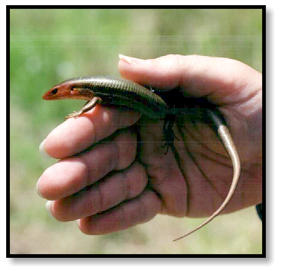
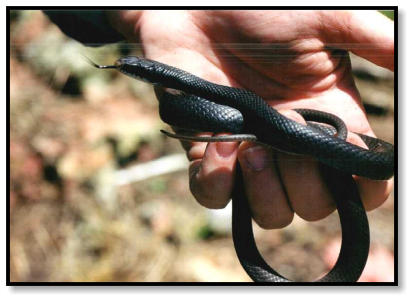

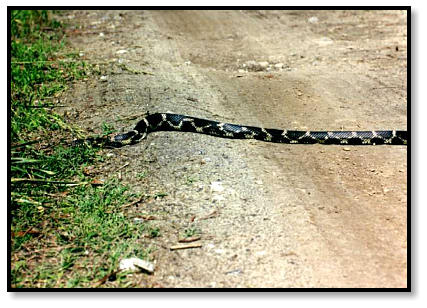
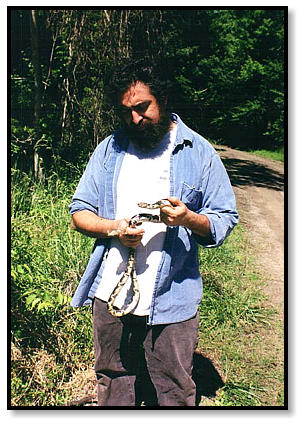
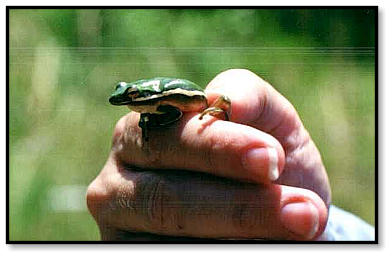
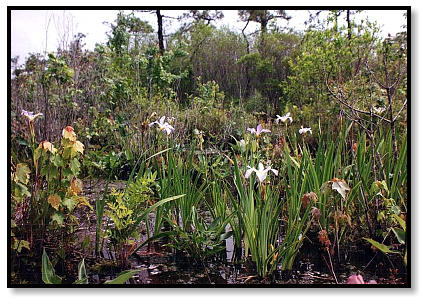


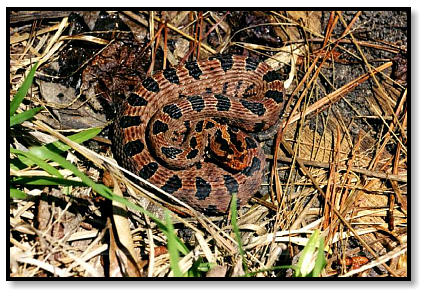
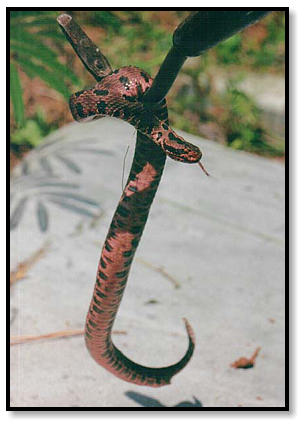

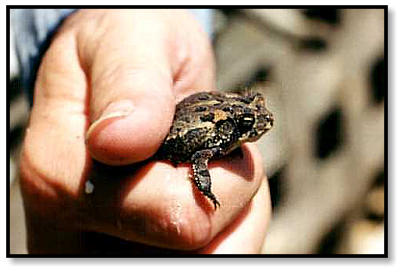
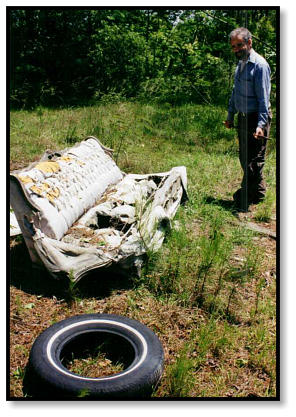
Snapping Turtle
Chelydra serpentina
Eastern Mud Turtle
Kinosternan subrubrum subrubrum
Carolina Pygmy Rattlesnake (Red Phase)
Sistrurus miliarius miliarius
Green Tree Frog
Hyla cinera
Southern Toad
Bufo terrestris
Eastern Glass Lizard
Ophisaurus ventralis
Southeastern Five-Lined Skink
Eumeces inexpectatus
Northern Black Racer
Coluber constrictor constrictor
Eastern Kingsnake
Lampropeltis getula
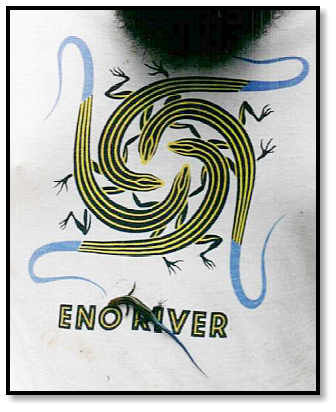

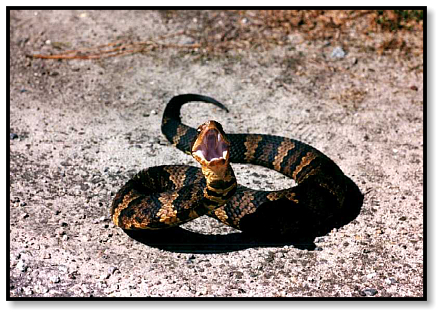
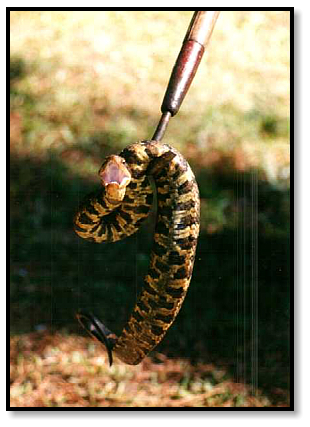
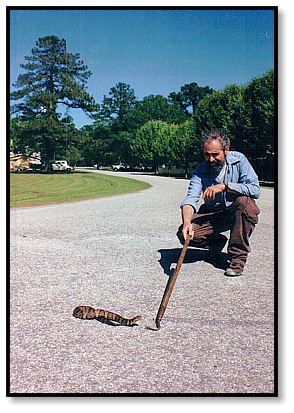
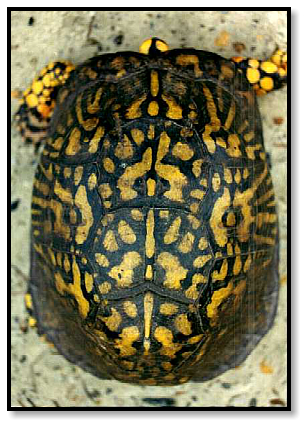

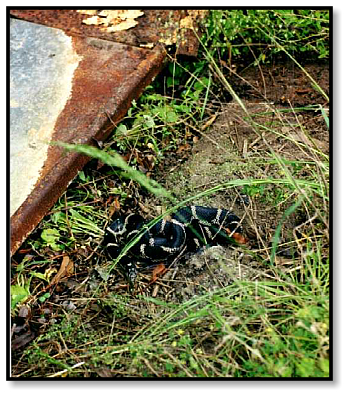



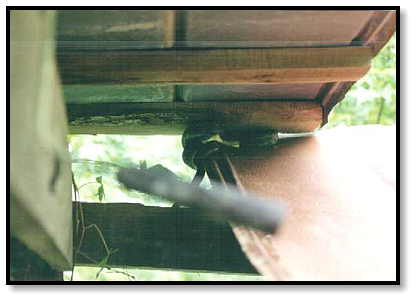
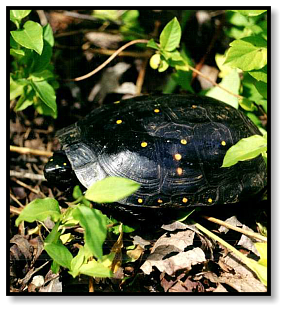
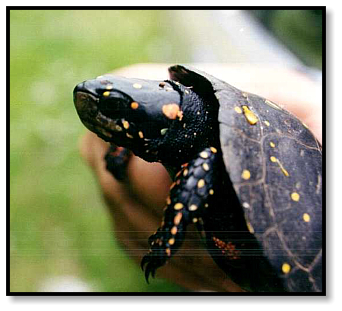
Eastern Cottonmouth Moccasin
Agkistrodon piscivorus
Greenish Rat Snake
Elaphe o. obseleta x E. o. quadrivittata
Brown Water Snake
Nerodia taxispilota
Eastern Box Turtle
Terrapene carolina carolina







